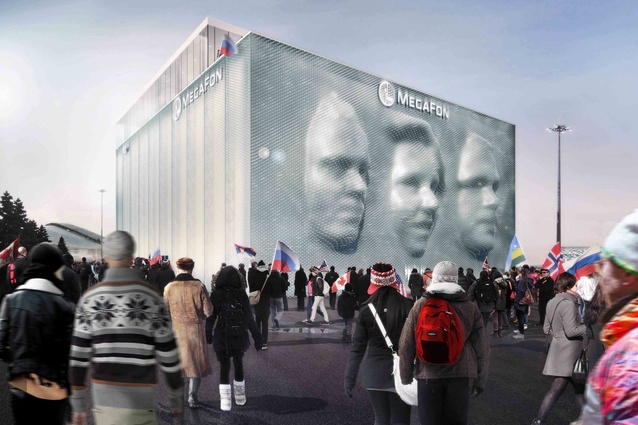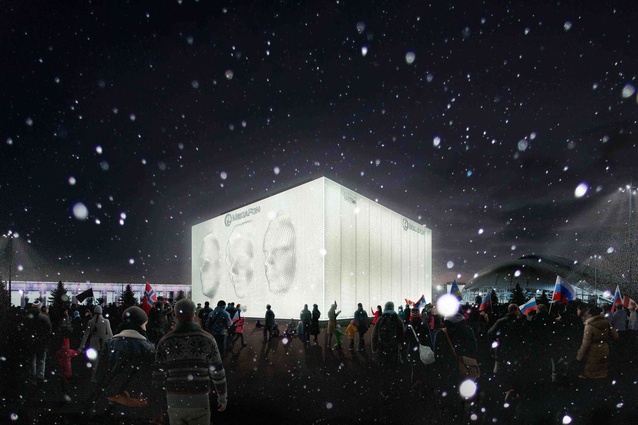Faces in the crowd
More than 150,000 visitors to the 2014 Winter Olympics will have 3D renderings of their faces displayed on the transforming façade of the MegaFon Olympic Pavilion, designed by British architect Asif Khan.
The pavilion’s façade, comprising 11,000 actuators behind a stretchy fabric membrane, is designed to function like a huge pin screen, displaying up to three eight metre-high faces at a time for a period of 20 seconds each.
Photo booths within the pavilion will take five individual pictures of each visitor’s face. The system will then take approximately one minute to calculate a three-dimensional model from these five pictures. After the 3D image has been processed it will be relayed to the 11,000 actuators. Each actuator can be extended by up to two metres, which allows it to define three-dimensional form at architectural scale. There is an RGB-LED light at the tip of each, making it possible to precisely calculate the position of every pixel and render the output of the façade in colour.
In order to realise his vision, the architect worked with Swiss engineering firm iart AG to implement a system that would meet the project’s requirements in relation to speed, useability and image quality. “I’m inspired by the way the world is changing around us and how architecture can respond to it. ‘Selfies’ and ‘emoticons’ have become our shorthand for communicating in the digital age; my instinct was to create a piece of architecture for Sochi that could be monumental yet open to that immediacy,” says Khan.
The MegaFon pavilion will remain in place for the duration of the 2014 Olympic and Paralympic Winter Games.













